Around 1986, Ronni Zoback’s father received a diagnosis of macular degeneration, a condition that leads to a progressive loss of vision. Over the next months and years, he suffered a loss not only of his vision but his self-esteem. “He became more and more sad, and felt cut off from the world,” she recalls, “so he went from this very independent, very vital, vibrant person to somebody who basically ‘sat.’”
Then, “by luck and by chance,” she and her father discovered CRIS – the Connecticut Radio Information System, Inc. Within days of contacting the nonprofit, her father received one of the early CRIS radio receivers. “It was crackly, and so reception wasn’t the best until we played around with it. But then it became wonderful because we found someone reading The New York Times,” says Zoback, of Tolland.
CRIS – the state’s only radio reading service – has been providing audio broadcasts to people who are blind or print-challenged for four decades. Throughout the day, volunteers read the latest national, state and local news on air – along with some 50 magazines, sports and weather reports, grocery ads, obituaries, arts and entertainment announcements, and more.
From its early days of broadcasting for two hours daily from a single basement recording booth in Rocky Hill, CRIS now has six studios around the state and broadcasts 24 hours a day, seven days a week. CRIS Executive Director Diane Weaver Dunne says most volunteers come in between 7 a.m. and 7 p.m. and pre-record their material. The station broadcasts live for three to four hours during the day, and offers taped material for the remainder of the day and night. “We generate about 14 hours of new content every day,” she says.
Today, CRIS offers its listeners audio via the latest listening technologies, and the “crackly” reception is gone. But even in the early years, CRIS was a beacon of hope, and a way of reconnecting to the world, for those who were not able to read on their own.
“I can picture him on the couch with the radio right next to him, with one of the first smiles I had seen on his face in probably years, in regard to himself,” says Ronni Zoback of her father. After losing his vision, “he wasn’t happy about himself until he was able to listen to this stuff and then converse [about it with his friends]. Suddenly, he was back in the mix of things.”
There from the beginning
‘Tom Grossi, 75, has been involved with CRIS since it began in 1978.
Retired from the state and blind since birth, he served for many years on the organization’s board of directors and chaired the board while it was building its new headquarters in Windsor. He now works as a volunteer, calling new clients to ask if they’ve received their radios, and to walk them through the program guide so they’ll know when particular programs are aired.
“A lot of people don’t know that every day, from Monday to Friday, there’s a regional roundup where volunteers read the local news in all of our satellite locations,” he says. “They let you know what’s going on in your town.” In addition to Windsor, CRIS has five regional studios, in Danbury, Norwalk, Norwich, Trumbull and West Haven.
As well as helping new listeners, Grossi also listens to CRIS Radio every day himself, to catch up on the news and, in particular, listen to the latest sports reports. He loves the fact that on-air volunteers read complete sports articles from the newspaper, whereas TV and “regular” radio may only give final scores and few details.
While he used to be able to read with the aid of special glasses and magnifiers, and also watch TV, that’s no longer the case. CRIS Radio serves as a lifeline, allowing him to keep tabs on his favorite teams, stay abreast of the news, find out when tickets are available for performances at local theaters, and even be aware when a friend or acquaintance has had a death in the family.
“If I wasn’t able to get the latest news and sports, I’d feel isolated and left out,” Grossi says. “When I’m with other people after listening to CRIS, I can talk to them about what’s going on.”
But he’s quick to emphasize that CRIS is not only for the blind or visually challenged. He says people who have difficulty holding a book or magazine – or turning the pages – due to conditions like multiple sclerosis, cerebral palsy, Lou Gehrig’s disease or even arthritis, are also eligible for the free service.
CRIS also provides services for people with learning, emotional or intellectual disabilities. In addition to English-language broadcasts, Spanish versions are also available.
Hospitals, museums, schools and more
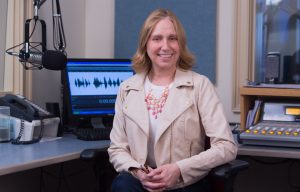
Dunne notes that 40 years in, CRIS continues to expand – not only geographically but with the number of programs it offers in the community.
“Two years ago, we began to stream to each patient bed at Saint Francis Hospital and Medical Center, and that really was an important initiative for us because people who are patients at hospitals spend a lot of their time waiting for procedures,” she explains. “TV can become monotonous, or a patient’s medical condition may prevent them from being able to read and pass the time.”
CRIS also records and streams children’s magazines for hospital patients at Connecticut Children’s Medical Center in Hartford. One of the channels is for very young children, and the other is for older kids.
Another exciting initiative is CRISAccess. After downloading a QR code reader to their smartphones, people can now visit a museum, scan the QR code at a particular exhibit, and listen to information about that exhibit. “This is really important for people who are blind or have low vision or dyslexia,” says Dunne. “We’re now in eight museums, and we’ve had thousands of hits.”
Dunne says CRIS based this project on recommendations from a focus group conducted by the Smithsonian, in which blind and disabled members said they would like to have an audio version of signage, along with a description of the exhibit and any tactile opportunities.
“There have been several national studies showing that only 11 percent of adults with a disability visit a museum because they don’t consider it accessible,” says Dunne. “We wanted to provide a low-cost method that would allow these people to visit and enjoy a museum – and make it rich, informative and fun.”
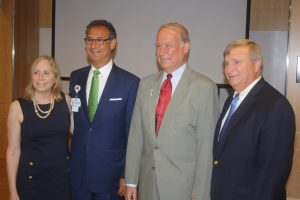 As with hospitals, CRIS charges museums a modest fee for service – one that’s far less expensive than for an equivalent commercial service. These fees help CRIS to defray the cost to create signage and QR codes, and provide high quality human narration of exhibits in both English and Spanish.
As with hospitals, CRIS charges museums a modest fee for service – one that’s far less expensive than for an equivalent commercial service. These fees help CRIS to defray the cost to create signage and QR codes, and provide high quality human narration of exhibits in both English and Spanish.
“We’re also in the process of developing a standalone mobile app specifically for museums, with an embedded QR code reader and GPS longitude and latitude functionality. This way, when people are visiting an outdoor living history exhibit, for example, they could walk around and the longitude and latitude readings would launch an automatic narrative for them. We hope to have it go into operation in next several months.”
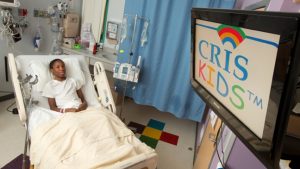
CRIS also has services for children who have difficulty reading, whether it’s due to vision impairment or something else. CRISKids and CRISKids for Schools provide children and teens with instant access to audio versions of written materials, from award-winning magazines to classroom print materials, all narrated by the nonprofit’s talented and dedicated volunteers.
“There are about 1,300 classroom titles in our CRISKids audio library, available on demand or through a subscription-based service,” Dunne explains. “We also do custom recordings for teachers, to meet the needs of students who are unable to read the print version. So far, about 100 schools have signed up.”
CRIS now receives a high volume of requests to have books narrated. “We’ve been inundated with requests. There’s a huge demand for it and a huge need for it,” she says.
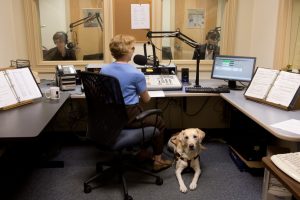 Dunne says the organization continues to work hard to embrace the latest technology. Whereas CRIS initially only distributed transistor radios, “now you can listen on a smartphone, through a hands-free speaker like Echo, through Internet radios or on your computer. We also have cable TV connectivity through several cable operators. Because we’re able to use so many methods, we’ve been able to expand the services we provide.” Nine years ago, CRIS audiocasts reached 4,000 people. Today, its audience numbers 85,000 people, and continues to grow.
Dunne says the organization continues to work hard to embrace the latest technology. Whereas CRIS initially only distributed transistor radios, “now you can listen on a smartphone, through a hands-free speaker like Echo, through Internet radios or on your computer. We also have cable TV connectivity through several cable operators. Because we’re able to use so many methods, we’ve been able to expand the services we provide.” Nine years ago, CRIS audiocasts reached 4,000 people. Today, its audience numbers 85,000 people, and continues to grow.
Making ends meet
Paul Young, board chairman and a volunteer for the past 30 years, says CRIS does a lot with a little. “We operate with a small staff and a large number of dedicated volunteers who provide voice talent,” he says. “We have more than 200 volunteers statewide who come in and read; some have been doing it for 20 to 30 years, and we recently gave out a 35-year award. We couldn’t do what we do without them.”
The station works hard to raise the necessary funds to cover its “tightly controlled” costs of half a million dollars each year. But the funds it has received from the state have dwindled dramatically – an experience shared by most, if not all, Connecticut nonprofits over the past decade.
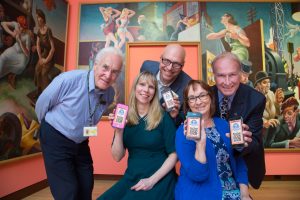
Young says at its peak, CRIS received $110,000 to $120,000 per year from the state. “Last year, we received $20,000 and this year, the new governor has committed to $20,000” – a figure that falls far short of what’s needed.
Adds Dunne, “The state cut our funding by 76 percent over last four years alone, so fundraising is more critical than ever. It’s really important for us to raise the money we need to keep our lights on.”
Young says the station writes a lot of grant applications and does receive grants based on specific programs, like its museum initiative or the CRISKids program. Lions Clubs “are also very good to us and donate a lot over the course of the year.” But because CRIS is not an FCC licensed radio station, he says, “trying to get people to underwrite any one of our broadcasts is a problem.”
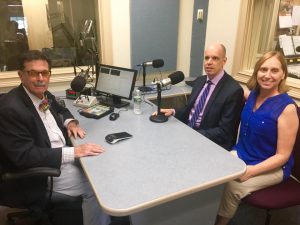 Occasionally, the station puts out a request for donations from listeners and supporters. “Donations are not large but they’re heartfelt. We sometimes get three quarters and a dime taped on a piece of paper and sent in to us. Many of our listeners are not wealthy people and their means are not such that they can donate large sums of money.”
Occasionally, the station puts out a request for donations from listeners and supporters. “Donations are not large but they’re heartfelt. We sometimes get three quarters and a dime taped on a piece of paper and sent in to us. Many of our listeners are not wealthy people and their means are not such that they can donate large sums of money.”
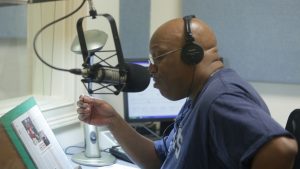
Overall, Young says, funding remains a challenge and the station is currently in the red. “But one way or another, we’re determined to close that deficit. By the end of the year, we hope to be much closer to that black number than we are right now.”
CRIS is actively seeking out sponsors for its annual “Dining and Dancing in the Dark” fundraiser – a takeoff on “Dancing with the Stars.”
Set this year for April 27 at the Bond Ballroom in Hartford, the evening gala features local celebrities and businesspeople competing for top ballroom dancing honors before a panel of judges. A live band provides tunes to dance by. Dunne says the event attracts about 200 people, “and we usually sell out. It’s a lovely and fun evening, and it helps us so much.”
Meanwhile, people like Ronni Zoback continue to be grateful for all that CRIS provides.
In the beginning, she says, “I don’t think I even understood how wonderful CRIS was, but they were angels to me.” And the experience inspired thoughts of how she could give back. “I have a New York accent and I fall back into it a lot, but maybe someone wouldn’t mind listening to me reading The New York Timesto them.”
For more information, visit crisradio.org or call (860) 527-8000.
Carol Latter is the editor of Seasons and a longtime journalist and writer who lives in Simsbury.
photography by Steve Laschever


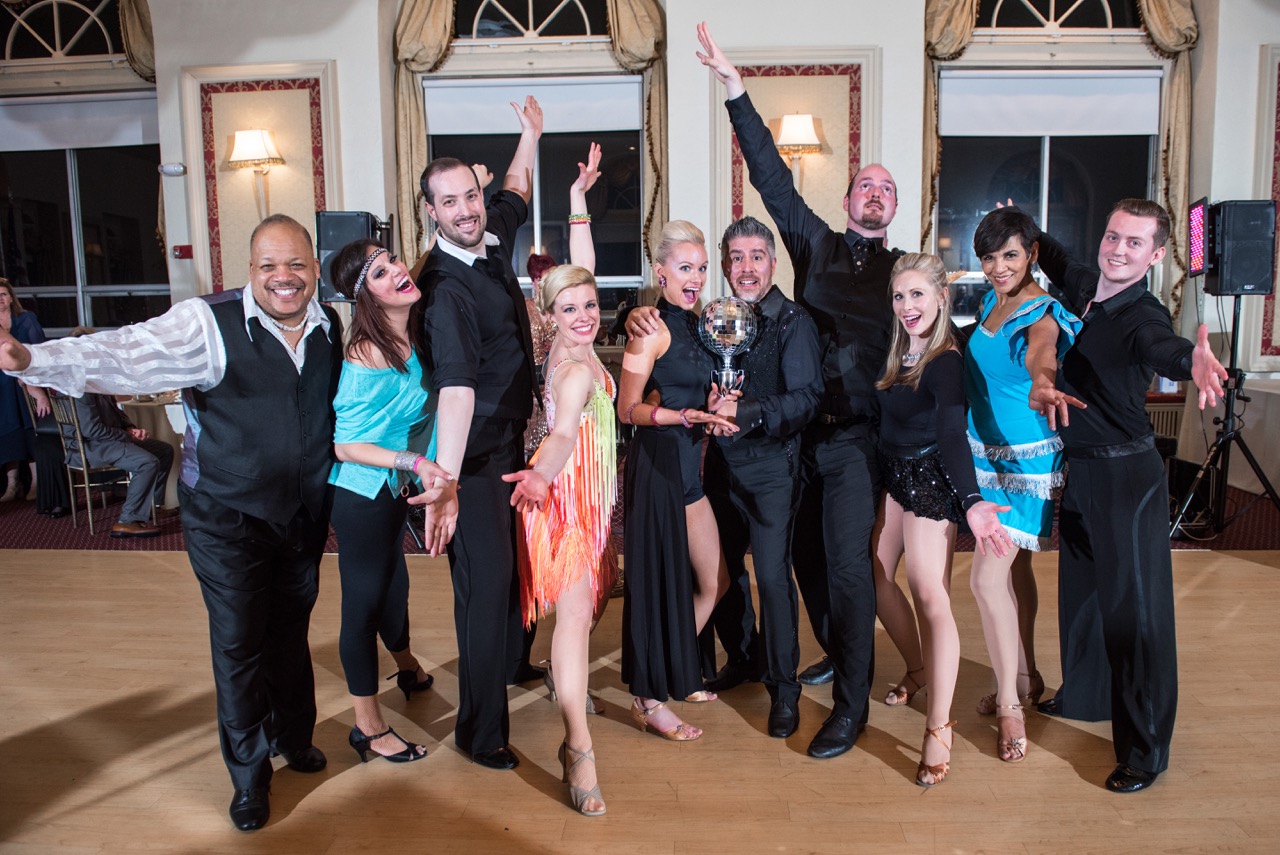



More Stories
Hospital for Special Care’s Ivan Lendl Adaptive Sports Camp
Special Olympics Connecticut: Supporting and Inspiring a Special Community
Healing Meals: Supporting Nourishment During a Health Crisis and Beyond